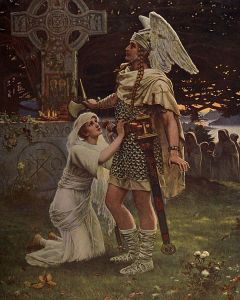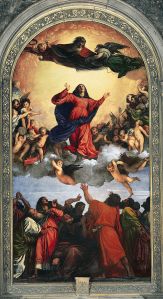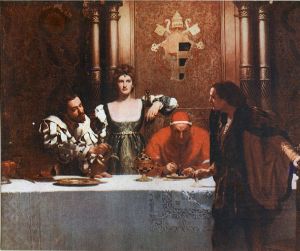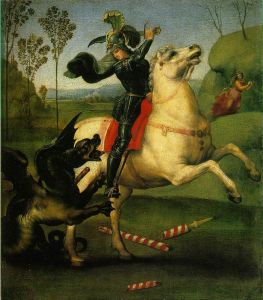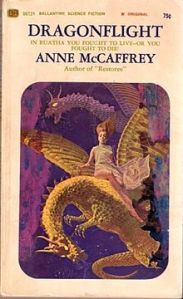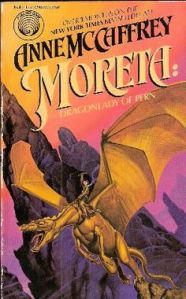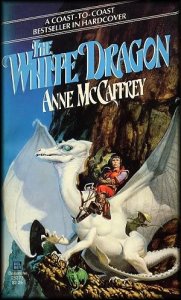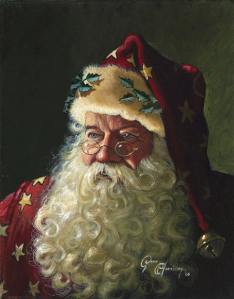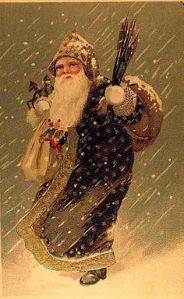 I shook my head to get rid of the sudden, loud buzzing sound in my ears. Feeling a little disoriented, I looked at the calendar, which said Thursday, the day I dreaded most. Sometimes I felt like it was always Thursday. It was nearly time for my regular two o’clock appointment… the couple from hell, pardon my cursing. After my heart attack about six months before, they had begun coming to me, and were likely to give me another. They never missed an appointment no matter how I wished they would.
I shook my head to get rid of the sudden, loud buzzing sound in my ears. Feeling a little disoriented, I looked at the calendar, which said Thursday, the day I dreaded most. Sometimes I felt like it was always Thursday. It was nearly time for my regular two o’clock appointment… the couple from hell, pardon my cursing. After my heart attack about six months before, they had begun coming to me, and were likely to give me another. They never missed an appointment no matter how I wished they would.
I watched the clock tick from one fifty-nine to two o’clock.
My receptionist opened the door. “Mr. and Mrs. Haydes are here. Shall I show them in?”
>>><<<
I lifted my pen from the notepad and regarded the couple seated across from me. “Would you listen to yourselves? You make marriage sound like hell. It doesn’t have to be that way. You both sabotage it every chance you get.”
“Of course marriage is hell,” said the husband across from me, dressed in a double-breasted, blue suit, giving him an almost nautical appearance. Add a captain’s hat and he’d look like a cast member on The Love Boat. “It’s the absolute worst thing that could possibly have happened to a once studly man like myself. But just like the moth flying into the flame, I had to do it. ‘Don’t go toward the light,’ my friends all said. But did I listen? Hell, no!”
His wife snorted. “Luke always does the exact opposite of what anyone advises him to do. That’s what he gets for being a devil-may-care, I’m-gonna-do-it-my-way sort of a guy. He’s Satan. That makes me Satan’s wife. Of course it’s hell—it comes with the territory. If I can put up with him, he can put up with me.” This week she wore little makeup, and was neatly coiffed with not a hair out of place. In a counterpoint to Luke’s dashing attire, she wore a beige wool suit, cut to just below her modestly crossed knees, with low-heeled pumps. Mrs. Haydes could have been a proper matron from any Protestant congregation, right down to her puritanical sense of morality.
This forty-five minute session of misery began promptly at two o’clock every Thursday. They booked their appointments under the pseudonyms, Lucifer and Persephone Haydes. He preferred to be called Luke, and she preferred to be called Mrs. Haydes. After six months of working with this pair of nut cases, I was beginning to suspect they were playing a game of mess-with-the-counselor.
Last week she’d been dressed like a teenaged skateboarder, and he as an English literature professor. The week before that, she was a hippie, complete with headband and love beads, and he was a cricket player.
Every week it was something different but always opposites. Mrs. Haydes seemed to choose her wardrobe based on what she thought would annoy him most, and he went with the opposite because he really couldn’t do anything else. He had the worst case of oppositional defiant disorder I had ever seen.
“Why are you here?” I had to ask, despite knowing I wouldn’t get an answer. “I no longer understand what you are trying to save here. You never take my advice. And you’ve been aware since the outset that I am a pastor, not a magician. What do you hope to gain from this?” I tapped my foot and looked at the clock. We were only fifteen minutes into this session, and I was already exhausted. “What you really need is a good divorce lawyer, not a counselor. I can tell you every reason why you should stay married, and if you are looking for religious affirmation, I can give you chapter and verse on the apostle Paul’s views regarding marriage. Over the last six months, I have done so repeatedly. We’ve discussed what you originally saw in each other and what you each want from your relationship, but you’re still at this impasse. I think that at this stage divorce is the only answer for the two of you.”
Luke snorted. “Don’t bother telling me anything the apostle Paul said—I wrote that book. I was delusional.”
“I think the pastor is right,” said Mrs. Haydes, primly folding her hands. “Divorce is the only option. I’m sure no one would blame me for leaving a devil like you.”
“I’m not giving up half of everything I own,” said Luke, clearly aghast at the notion. “Do you know how many divorce lawyers she has access to? No way am I going to let her off so easily.”
“I come from a broken family,” said Mrs. Haydes, discreetly wiping a tear. “I don’t want our children to grow up in a broken home. But it would be better than Anaheim. It’s a bad environment to raise children in. I want to move back to our palace in Hell. All it needs is a little remodeling.”
I couldn’t stop myself. I had to ask it. “And you think Hell is a good environment to raise kids in?”
“Well, at least there’s no crime in hell. We have the finest law enforcement professionals in the universe.” She glared at me defensively. “Where should I be raising them? Seattle? I’m not exposing my children to a bunch of pot-smoking vegans who ride bicycles and wear socks with sandals.”
Luke brightened up. “I love Seattle—perhaps we should move there. I could get some goats or raise alpacas. They have the best coffee in the world!”
Mrs. Haydes sniffed. “The place is full of vulgar vegetarians. They’re always taking their children to yoga and soccer, where everyone gets a trophy whether they win or lose—it’s just wrong. We will most certainly not be moving to Seattle.”
“Enough,” said Luke. “I’m going vegan and we’re moving to Seattle and that’s final.” He turned to me and missed her small, satisfied smile. “What I really want to talk about is the stint we did on ‘Home Hunters.’ She destroyed me in front of millions of people, and I have to watch it every time they rerun that episode, which they seem to do three times a week.”
“Well dear, it airs on one of your networks, and you make the rules. You’re the one who decides why the television viewing public has 999 channels available to them, and all but three of them at any given time are showing the same reruns of Pawn Shop Heroes, Home Hunters, or Gator Boys.”
From the look on Luke’s face, Mrs. Haydes had the knife and was twisting it for all she was worth.
She continued, “Besides, I said very clearly that I wanted the extremely modern condo, with all the sleek furnishings and the gorgeous terrazzo floors. I said it at least six times. It’s on the videotape of the show.” She smiled at him smugly. “You just had your heart set on that cozy, little pink bungalow with the seventies’ décor and the orange shag carpet. You insisted, and so, of course, I gave in. Once you make up your mind, it’s impossible to change it.”
“See?” Luke exploded. “See how she manipulates me? How could I not go for the house she said she didn’t want? It was like asking the dog not to eat the chocolate you left on the coffee table. I’m Satan! I’m not really an agreeable sort of guy, and she knows exactly how to manipulate me, so now, twice a week, everyone in America gets to watch me buying grandma’s overpriced, decorating nightmare. It’s been voted the most popular episode of all time! She embarrassed me in front of God and the world.” He dropped his head into his hands. “We’re moving to Seattle now, and it’s going to be hell trying to sell that dump in Anaheim. I won’t even be able to rent it out for enough to cover the carrying costs. What a life!”
I knew this session was going nowhere. Their sessions never went anywhere positive because they were masters at circular reasoning. “What is it you want from me? You must have some reason for putting me through this agony every week.”
“I despise him, so I want a divorce, of course,” said Mrs. Haydes, with a smug, little smile. “I’ll be happy with my half of everything, and, of course, alimony. I gave up my career to raise our children, you know, and they will need child support.” She aimed her tight, fundamentalist smile at me. “We won’t waste your time any further.”
“No. No. No!” Luke’s eyes widened and he leaned forward. “No divorce. I adore you, Persey—you’re the love of my life!” He kissed her hand. “I would be lost without you. Think of the children.”
“I love you too, Luke—I just hate being around you. And now you’re going to be forcing all your hippy, vegetarian food on me.” She turned away from him, primly pursing her lips. “You know how I love steak.”
“No dear, not vegetarian. Vegan. It’s good for you, you’ll love it. Why, I’ve a recipe for smoked tofu that will put a smile on that pretty face in no time.” Luke smiled his most charming. “If there is one thing I understand, it’s how to barbecue. You’ll adore my smoked tofu salad.”
“If you say so, dear. I’ll likely throw up.”
The two rose and left my office. I sighed.
Luke might claim to be Satan, and yes, it was even possible given how contrary he was, but if that was case, Mrs. Haydes ruled in Hell. There was no mistake about that.
I heard my receptionist speaking in the anteroom. Yes, Mrs. Haydes was scheduling another appointment…two o’clock next Thursday.
Satan might move to Seattle, or he might not. Somehow, I knew his new penchant for tofu and coffee wouldn’t get me off the hook.
I shook my head to get rid of the sudden, loud buzzing sound in my ears. Feeling a little disoriented, I looked at the calendar, which said Thursday, the day I dreaded most. Sometimes I felt like it was always Thursday. It was nearly time for my regular two o’clock appointment… the couple from hell, pardon my cursing. After my heart attack about six months before, they had begun coming to me, and were likely to give me another. They never missed an appointment no matter how I wished they would.
I watched the clock tick from one fifty-nine to two o’clock.
My receptionist opened the door. “Mr. and Mrs. Haydes are here. Shall I show them in?”
The Marriage Counselor, by Connie J. Jasperson © 2015-2018, All Rights Reserved, was first published on 06 March 2015, at Edgewise Words Inn. Reprinted by permission.

![By Edward Fuglø, Postverk Føroya (faroestamps.fo) [Public domain], via Wikimedia Commons](https://conniejjasperson.com/wp-content/uploads/2018/01/faroese_stamp_584_the_seal_woman-by-edward-fuglc3b8-postverk-fc3b8roya-faroestamps-fo-public-domain-via-wikimedia-commons.png?w=214&h=300)
![By Robertgrassi (Own work) [Public domain], via Wikimedia Commons](https://conniejjasperson.com/wp-content/uploads/2016/07/villa_diodati_2008-07-27_rg_5.jpg?w=300&h=225)


 However, that which was once canon regarding vampires is no longer set in stone.
However, that which was once canon regarding vampires is no longer set in stone.
